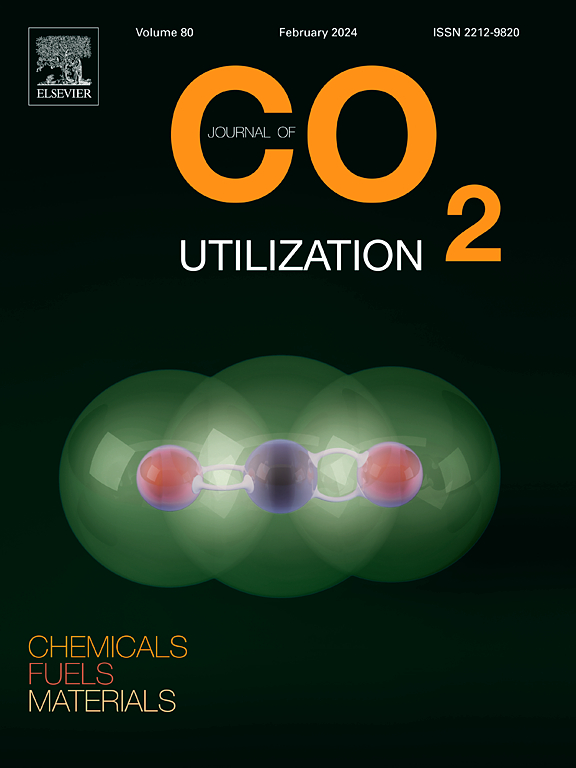Cu single atoms supported on crystalline graphdiyne porphyrin analogs with dual active sites for enhanced C2 product formation
IF 7.2
2区 工程技术
Q1 CHEMISTRY, MULTIDISCIPLINARY
引用次数: 0
Abstract
Developing advanced catalysts for efficient electrochemical CO2 reduction has long been a sought-after objective, but designing catalysts with open porous structures, metal sites, high atom utilization, nanoporosity, and electrical conductivity, remains challenging. Downsizing metal sites to single atoms and supporting them on conductive Covalent Organic Frameworks (COFs) offers a strategic solution to these challenges. Herein, we report a novel catalyst with a combination of copper single-atom sites supported by a highly crystalline graphdiyne porphyrin analog (Cu-SGPA). Computational analysis reveals the presence of 2.34 nm open pores with conducting π-conjugated graphdiyne linkages. The joint action of the dual active sites of Cu single atoms and the adjacent carbon atoms facilitates carbon product formation through uniquely achieved intermediate species. Cu-SGPA demonstrates a remarkable faradaic efficiency (FE) of 70 % at optimized potentials of −1.0 V vs RHE, with over 45 % FE for C2 products, surpassing FE for single-atom catalysts supported on COFs. This study introduces a promising catalyst design that will inspire future efforts in developing and optimizing similar single-atom catalysts supported on conductive COFs for enhanced CO2 utilization.
铜单原子支持晶体石墨炔卟啉类似物与双活性位点增强C2产物的形成
长期以来,开发先进的电化学二氧化碳还原催化剂一直是人们追求的目标,但设计具有开放多孔结构、金属位、高原子利用率、纳米孔隙度和导电性的催化剂仍然具有挑战性。将金属位点缩小到单原子,并将其支持在导电共价有机框架(COFs)上,为应对这些挑战提供了一种战略解决方案。在此,我们报道了一种新型催化剂,其具有由高结晶石墨炔卟啉类似物(Cu-SGPA)支持的铜单原子位点组合。计算分析表明存在2.34 nm具有导电π共轭石墨烯键的开孔。铜单原子的双活性位点与相邻碳原子的共同作用,通过独特的中间产物形成碳产物。Cu-SGPA在- 1.0 V / RHE的优化电位下表现出了显著的法拉第效率(FE),达到70 %,C2产物的FE超过45 %,超过了COFs负载的单原子催化剂的FE。该研究介绍了一种很有前途的催化剂设计,将激励未来开发和优化导电COFs支持的类似单原子催化剂,以提高二氧化碳的利用率。
本文章由计算机程序翻译,如有差异,请以英文原文为准。
求助全文
约1分钟内获得全文
求助全文
来源期刊

Journal of CO2 Utilization
CHEMISTRY, MULTIDISCIPLINARY-ENGINEERING, CHEMICAL
CiteScore
13.90
自引率
10.40%
发文量
406
审稿时长
2.8 months
期刊介绍:
The Journal of CO2 Utilization offers a single, multi-disciplinary, scholarly platform for the exchange of novel research in the field of CO2 re-use for scientists and engineers in chemicals, fuels and materials.
The emphasis is on the dissemination of leading-edge research from basic science to the development of new processes, technologies and applications.
The Journal of CO2 Utilization publishes original peer-reviewed research papers, reviews, and short communications, including experimental and theoretical work, and analytical models and simulations.
 求助内容:
求助内容: 应助结果提醒方式:
应助结果提醒方式:


